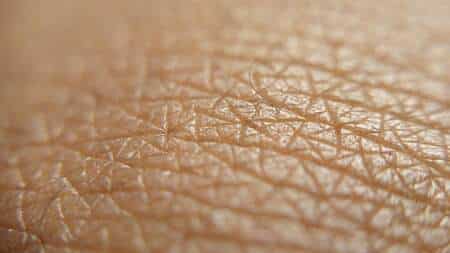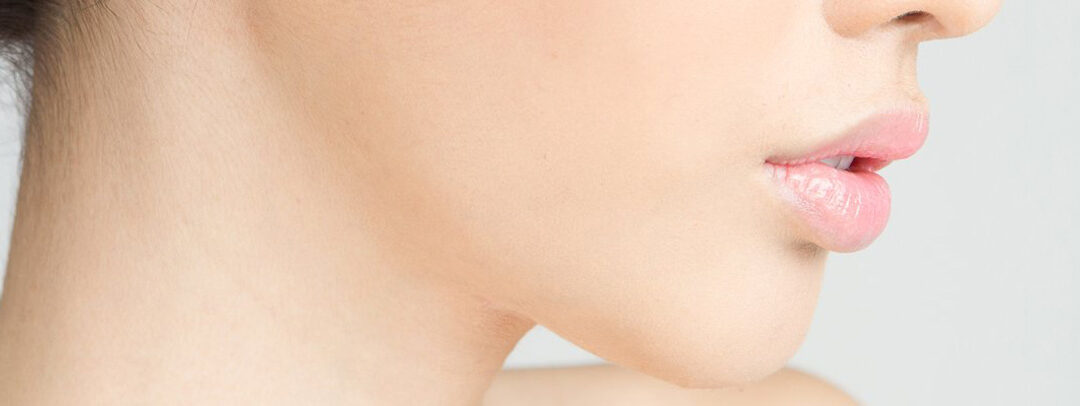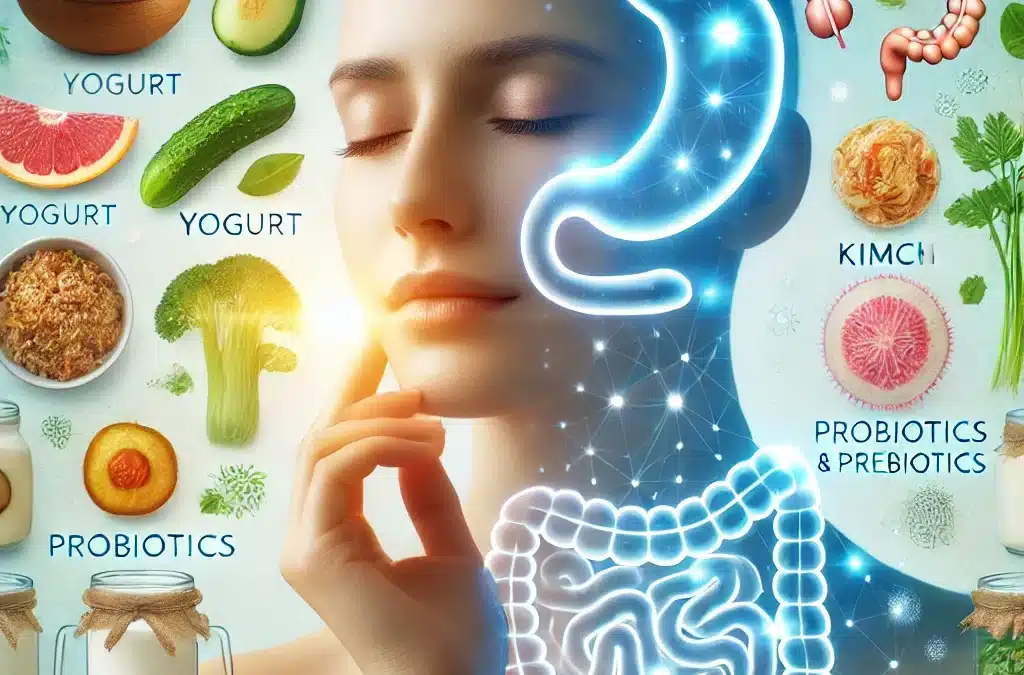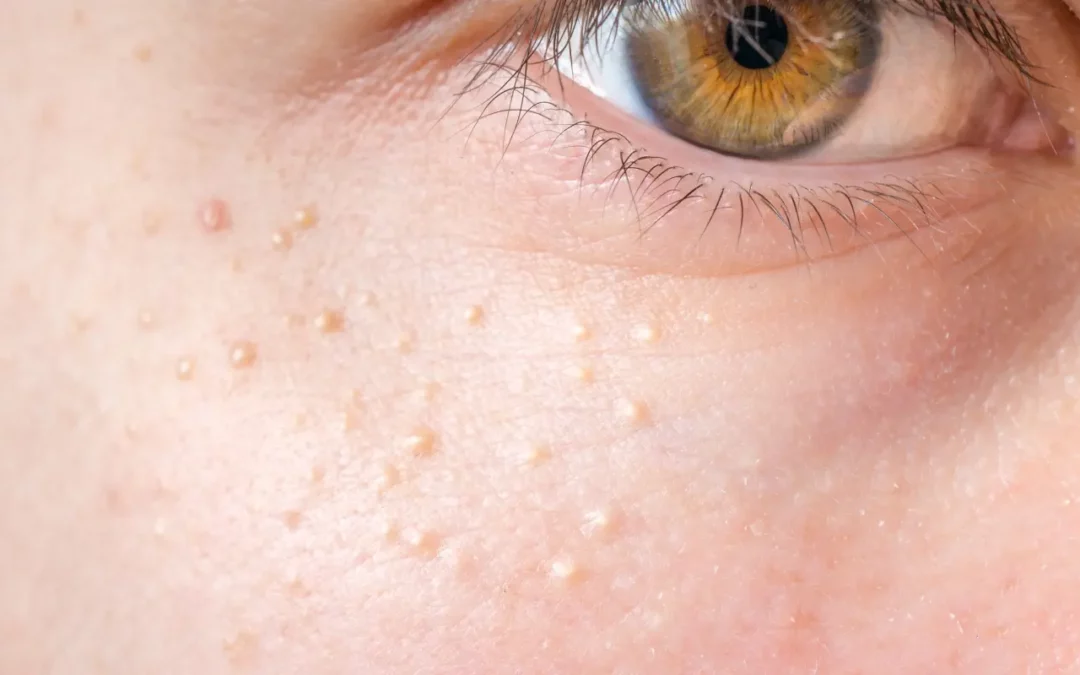
by Sue Carroll | Apr 2, 2024 | Uncategorized
Enzyme Exfoliation for the Winter Skin
All skin types can benefit from enzyme exfoliation during the cooler months of winter, where hot showers and heaters create superficial dryness. Enzymes are a naturally occurring solution for this challenge by digesting and dissolving dead, dry skin cells, revealing healthy, radiant skin.
Enzymes are primarily proteins that are necessary for life. In the body and cells their role ranges from digestion to increasing metabolism. They speed up the rate of most chemical reactions that take place in the cells, catalyzing most cellular functions.
When applied topically, enzymes are proteolytic, meaning they digest the cells of the stratum corneum – the first layer of the skin. Enzymes break down the old cells that congest the pores and will then prevent the penetration of topical serums, which in turn hinders overall skin functioning. Removing the dead skin cells, allows the skin to regenerate more quickly, assisting with skin concerns such as premature aging and acne. Other benefits when using enzymes include their ability to increase skin elasticity and hydration by maintaining natural moisture levels in the skin. Enzymes speed up cellular functioning and fight against oxidation and free radical damage, protecting skin from environmental damage.
In the treatment room enzymes and acids can be used separately or mixed, each providing a powerful result. Enzymes in general are less exfoliating than acids like glycolic, salicylic, mandelic or lactic. Therefore, they are more appropriate for sensitive, medically compromised, reactive or thin skin. Introducing enzymes in skin treatments when you are pregnant or breastfeeding is particularly useful to still allow an effective method of exfoliation.
Enzymes:
Mostly sourced from vegetables and fruit such as pumpkin, (the most exfoliating enzyme) pineapple (bromelain enzyme), papaya (papain enzyme), and apples
A gentle exfoliation method but this can be dependent on the pH
Exfoliates the stratum corneum
Less likely to irritate the skin
Function at a wider pH range
Digest dead skin cells
Come in the form of either a gommage, gel, cream, liquid or powder
Acids:
- Mostly sourced from milk, sugar and plant-based products
- Deeper exfoliation method with progressive, mid-depth and deep peeling levels
- Can be an aggressive method of exfoliation
- Are both pH and % dependent on the level of exfoliation
- Dissolve dead skin cells
Enzymes can be more efficiently utilised in the treatment room when:
The cleanser being used is chosen wisely. A creamy cleanser will limit the exfoliation intensity compared to a foamy or gel-based cleanser.
A pre-peel solution will strip the skin of lipids and therefore facilitate a more aggressive exfoliation
The use of heat and moisture with a steamer or hot towel will amplify the enzyme activity.
Enzymes can be added to many treatments in the clinic room to increase their efficacy. They can be blended with antioxidants, pure vitamins and hyaluronic acid which will increase the support, hydration and vital nutrients of the skin. Some of the treatment modalities which will benefit from the addition of enzymes are:
*Microdermabrasion results using suction and super fine crystals to exfoliate the skin can be amplified when using enzyme exfoliation before the treatment
*JetPeel treatments utilise a medical-grade saline solution instead of microcrystals from the microdermabrasion. The supersonic jet of saline droplets from the JetPeel is amplified when an enzyme solution is used before this step. This has the added benefit of improving the circulation and hydration of the skin
*Ultrasonic skin exfoliating utilises sound waves and vibrations that penetrate through the upper layers of the skin. The Ultrasonic treatment improves the texture, tone and circulation of the skin. The benefits of the Ultrasonic device are amplified when an enzyme exfoliation is used before the treatment.
Enzymes are not new in the aesthetic arena but are worth consideration when wanting healthy, hydrated and radiant skin.
Renew & Revive Skin with a Peel

by Sue Carroll | Sep 3, 2023 | Uncategorized
Colour Correction, Skin Firming, Refinement and Radiance. What Treatment Do I Choose?
Texture, tone and colour all play a huge role in defining the appearance of healthy skin. There are many treatments available to improve the texture and complexion of your skin by reducing hyperpigmentation, and fine lines, clearing acne, improving pore size, reducing scarring and simply brightening the skin. But where to start, what to have and what to combine it all with, for the best possible result.
RF Skin Needling is a revolutionary skin tightening and firming treatment, which utilizes a combination of percutaneous needling and radio frequency to induce the tightening of elastin fibres and induce collagen production. A set of tiny needles creates controlled micro-injuries on the skin’s surface. These tiny needles also deliver radiofrequency energy to the deeper layers of the skin, promoting collagen production to firm the skin. By incorporating both the radio frequency and the use of the microneedles, the end result is a firming from the RF and a refinement of the skin texture. This treatment is also beneficial when treating stretch marks and scarring. If the skin is in a less than optimal condition it is a great choice to start with 2-3 skin needling treatments spaced about 7 days apart and then embark on the RF needling treatment which can be performed every month for 2-3 treatments with very minimal downtime.
Surface rejuvenation and toning with the Q switch laser is a gentle and non-invasive treatment that works by stimulating the deeper layers of the skin. A very short delivery system gently heats the skin, is able to shatter pigment, stimulate collagen production and assist with skin refinement all without downtime. The Q switch laser toning system is good for all skin types, particularly those who suffer from acne, blocked or enlarged pores, dull skin, pigmentation and simply those who wish to step up from their facial peels and treatments. The Q switch laser treatment may be added to a fractional laser treatment for a boost in results. It may also be used in the China Doll or Hollywood skin treatment for that special occasion.
Over time and then added stress in our lives, the underlying changes to the skin result in fine wrinkles, lines and sagging skin. HIFU is a treatment that works to lift and tighten the skin, and at the same time reduce fine lines. HIFU works by delivering ultrasound energy non-invasively to heat the skin tissue at numerous depths, from 1.5mm and up to 4.5mm for the face and up to 13mm for the body. This will trigger a natural regenerative reaction that promotes the development of new collagen and contracts the fibres for the firming effect. After the HIFU treatment, you can return to work the next day, with no visible downtime, occasionally a feeling of slight bruising may last for 2 weeks due to the depths the ultrasound has penetrated. It must be remembered nothing will replace a facelift but often when postponing this procedure, this might just be the next best thing when combined with IPL for colour correction, RF Needling for skin refinement and a little injectable here and there.
Fractional laser delivers multiple, microscopic columns of light energy into your skin to emulate micro-wounds which will in turn stimulate your skin’s natural healing and rejuvenation. Fractional laser is an effective treatment for pigmentation, fine lines created by the sun, scarring and general skin refinement. This treatment has a few days of minimal downtime and can be repeated every 4-6 until the desired results are achieved.
An old favourite and a great treatment to start with before all treatments is the IPL -Intense Pulsed Light. IPL uses multiple wavelengths and will treat both capillaries and pigmentation in the same treatment. Darkening of pigment is seen immediately post-treatment and can last 7-10 days and will then be sloughed off.
It is so easy to restore your confidence and natural beauty when you are guided by a professional aesthetician. Working with the inside and the outside, real beauty is much deeper and longer lasting and will radiate to the world. When you are not sure of what treatment is best for you, instead of guessing, simply book a consultation with your aesthetician and be guided by their expertise.

by Sue Carroll | Jan 1, 2023 | Uncategorized
Trust Your Gut When it Comes to Your Skin
In order for your skin to look good, it is dependent upon how you treat it from the outside and the inside. You may have heard the term gut-skin axis. Our skin is like a window to our gut, if you are suffering constipation, diarrhea, bloating or gas there is a good chance you may be experiencing facial dryness, rosacea, acne or other inflammatory skin conditions. These are some of the symptoms of poor gut health and research has shown by addressing your gut health through diet, lifestyle and supplemental support you will be glowing from the inside out.
The gut is often referred to as our second brain and has a definite link with both our well-being and skin health. While our gut is certainly not one of the most glamorous organs in our body, 1-2 kgs of microbes that live there, form each person’s unique microbiome. Our brain isn’t the only organ in control of our emotions – 95% of serotonin, the body’s happy hormone is created in the gut and also has a profound effect on our physical, mental and emotional balance. Without good gut health, we are unlikely to be absorbing efficiently the nutrients we are taking in and therefore our skin will reflect our poor health. Our gut bacteria are important to assist with producing micro-nutrients like vitamins and antioxidants from the food we ingest. Our gut will also support the breakdown of macro nutrients such as carbohydrates, proteins and fats to ease digestion and keep our colon healthy.
Some of the signs of poor gut health might be food allergies, poor memory, autoimmune disease, diabetes, anxiety, depression, hormonal imbalances, low energy, dark circles under the eyes, frequent infections, mood swings, interrupted sleep, acne, dry skin, rosacea, eczema, psoriasis and dermatitis.
When the regulatory balance in the gut is evident this in turn creates an inflammatory response which will often show up in the skin with one or more of the above conditions. Remember our skin is our largest organ and is often the outside mirror for what is happening on the inside. If the skin is inflamed, it usually means our inside is screaming out to us for help on the inside. The gut microbiome and the skin are intrinsically connected, offering a defence against pathogens in the environment. This gut-skin axis has been linked to many inflammatory skin disorders. When there is dis-ease within the gut there is often inflammation in the skin.
So how can you keep your gut healthy? A good rule of thumb is to eat a wide variety of nutritious whole foods from all food groups, which will also contain a lot of plant foods that are beneficial for your gut bacteria. An easy way to think of good food compared to that which may not be so healthy is to limit drastically food which comes in a packet. One of the best kinds of food for good gut health is that which is fermented such as yoghurt, kimchi and apple cider vinegar as they are overflowing with good probiotics. These support our immune defences and can also help to break down foods we can find hard to digest. The second way to support good gut health is through prebiotics found in foods like barley, beans, garlic, onions, cabbage, asparagus and legumes. A good nutritionist or naturopath may assist with your gut health.
While you are working on your inside with a good health professional, the external inflammation can be reduced with in Clinic treatments such as the Jet Peel Exfoliation and Infusion. Often the skin will be experiencing dryness, flaking, acne and inflammation and when these are reduced through gentle but effective, cooling exfoliation techniques, hydrating and calming serums can be absorbed much more effectively assisting with topical results.
By making simple changes to your diet and correcting any underlying imbalances in your gut your skin will thank you for it with a radiant complexion.

by Sue Carroll | Sep 13, 2022 | Uncategorized
What Is Comedogenicity
We have all used products where we end up with our skin blocked and spotty. These products can be anything from shampoo, conditioner, moisturiser, makeup or self-tanning products when applied to the skin or hair. Ingredients creating blocked follicles are known to be comedogenic.
A comedogenic component means that it can clog the pores. This is done by accumulating follicular hyperkeratosis – increased keratin production in the hair follicles. Over time, this may lead to blackheads, milia, sebaceous hyperplasia and clogged follicles. These symptoms do not always transpire quickly; it may take months of using a comedogenic product before it becomes obvious. Each person’s skin chemistry can determine the degree of an ingredient’s comedogenicity; therefore, it is highly mutable between people. One person may not react, while another may have disproportionately clogged pores in just a few short weeks.
Even ingredients not typically comedogenic can create havoc depending on our exclusive skin enzymes. Human sebum is inherently comedogenic, so even if you are prone to clogging and try to avoid all comedogenic ingredients, it is not certain protection against blackheads.
Some ingredients that may be comedogenic are petroleum derivatives, cocoa butter, oleic acid, sodium lauryl sulphate, coconut oil, wheat germ oil, palm oil, linseed oil, isopropyl palmitate, isopropyl isostearate, butyl stearate, myristyl myristate, decyl oleate, octyl stearate, octyl palmitate, Isocetyl Stearate, propylene glycol-2, lanolin and coal tar derivatives. It is important to be aware that a product containing a comedogenic ingredient may not be a bad product choice for someone who is not prone to acne and blocked pores.
Comedogenic list inconsistencies are based on numerous elements. First, depending upon the component strength of that ingredient within the formula is vital. A formulation is not only a sum of its parts – component combinations can make a comedogenic ingredient into a non-comedogenic ingredient and vice versa.
Secondly, the process in which a component is extracted and treated plays a role.
Third, the source of the raw material can affect its rating.
Although comedogenicity is not an exact science, there are points to be aware of to help reduce the adverse effects of a product.
- Please read the ingredient index list on the back of the bottle or packaging and compare it with the comedogenic list
- Ensure shampoo and conditioner are thoroughly rinsed from your hair and keep it tied back at night to help reduce the leave-in residue pressed into and against the skin.
- Oil-free does not mean it is non-comedogenic
- Do not leave makeup on the skin overnight. Instead, ensure cleansing and toning with gauze and toning lotion occurs. For optimal results, cleansing and toning is done morning and night, followed by serums and treatment creams prescribed by your skincare professional.
- Using either retinol, mandelic, glycolic, lactic or BHA serum at night can assist with skin refinement and decongesting the skin
In-clinic treatments can help remove/reduce blockages in the skin. One of the most effective treatments is the Skin Classic, also known as Diathermy. It is an effective and affordable non-laser treatment for minor skin imperfections such as blackheads, milia and sebaceous hyperplasia. Diathermy will dehydrate the oil and reduce or remove the blockage when related to skin blockages. Treatments are relatively quick, with little discomfort, and provide instantaneous results with no anaesthesia and healing times ranging from 5 to 10 days to a few weeks for larger skin conditions. Best results are achieved when used in conjunction with a prescribed skincare routine to ensure the blockages are not reoccurring.
Many factors can lead to comedones, milia and sebaceous hyperplasia, including the skin’s natural oils, dead skin, makeup or other products becoming lodged in the pore. Do your homework with the ingredient index and follow a prescribed skincare programme, and the risk of blockages in the skin will be reduced.
Here is a link to a great article
For other related posts see the links below
Shining the light on Hyperpigmentation
The Lymphatic System and the Skin

by Sue Carroll | Jul 13, 2022 | Uncategorized
Men vs Women Are They Different?
Do Men & Women Have Different Skin? Our largest organ, the skin, has many similarities between men and women, but there are also some key differences. Men’s skin is recognised as different from women’s by the top skin care companies worldwide.
Hormones will always be the main difference between men and women, which is the first step to explaining the differences in men’s skin. The androgens, particularly the hormone testosterone, attach to the receptors in the dermis and epidermis, creating noticeable differences in the male skin physiology.
Essentially there are six primary differences between men’s and women’s skin.
- Men have slightly oilier skin than women. This is because their sebaceous or oil-producing glands are smaller, but their skin has a higher secretion of sebum. Oilier skin can be more prone to open pores, blemishes and acne. Considering this, men’s skin care products, starting with their shaving system, will factor this in to offer more balance for sebum production.
- Men have more facial hair than women, which is more coarse and tough. When choosing a shaving protocol, consider both the condition of the skin and the hair texture to help avoid pseudofolliculitis – aka ingrown hairs. This is where the coarse hair grows sideways in the skin follicle and is caused mainly by shaving. Where possible, the wet shaving method will produce a better and more consistent shave, reduce razor burn, skin irritations, and ingrown hairs and produce a clean and healthy appearance. Men’s skincare products that control infection and reduce cellular blockages will help to eliminate this problem.
- Men’s skin is slightly more acidic and has an overall sweat composition that contains more AHA and lactic acid, contributing to the skin’s acidity. Washing the skin is the first step in any skin care programme. Most face washes or soaps men use have a very high pH level, undermining the skin’s natural defence system. The perfect face wash for men will clean, energise and maintain the skin’s natural acid mantle, producing healthier skin.
- Most men experience more sensitive skin compared to women. This may be seen in the form of flaking, dryness and redness. Starting with the irritating effects of shaving, incorrect products and regime, and other damaging conditions such as wind, cuts, sun, the use of hot water, and chemicals will increase skin sensitivity.
- Physiologically male skin has more active fibroblast cells compared to women. This results in an increase in collagen production, which means thicker skin. Thicker skin has many advantages, but it also has a downside whereby their skin may have more and deeper facial lines and more age spots. Men’s skin cells also carry fewer antioxidants, which can increase the number and depth of facial lines and pigmentation marks. When men look after their skin from an early age with sun protection and preventative repair serums and treatment creams, they can maintain skin tone, strength and a marked reduction in wrinkles.
- The rate of skin cancer is also higher, particularly in Caucasian men. The most common form of skin cancer in men is melanoma, generally found on the neck, upper back, ears and face. For maximum sun protection, a good sunscreen with zinc oxide must be used daily as it will contain a naturally higher occurring sun protection factor.
Men are wanting result-oriented treatments and products, but they still want simplicity. Many of the time-proven, effective ingredients will deliver the same benefits to both sexes, but it is the levels within the formulas that make the difference. A scientifically formulated skincare range and treatment programme will be focused on five simple but critical skin laws: cleanse, exfoliate, tone, restore and build and protect.





